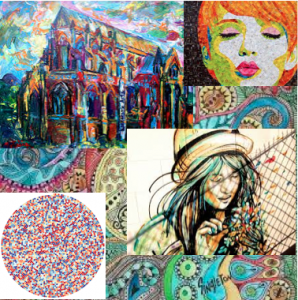Before I saw the murals, I had no idea what to expect as I have seen many all over the Eugene area. However, I ended up having my attention completely captivated by these two works of art. Both of the murals are a very straightforward illustration of what they are trying to portray; one being the complete development of science and the other being the complete development of the arts. The two brothers that created these murals, Arthur and Albert Runquist, depict figures and ideas about race and ethnicity that reflect the social norms of the time that they were created, which was in the 1930’s. Both of the murals look very similar from far away but if you examine them closely, you can tell just how beautifully unique and special each one is. Both of them illustrate the development of a certain subject over a period of time and the way that they are both so similar but different is truly amazing and definitely capture the history of the works of art. One part of the murals that I especially admired is how it shows that each of these topics arises from the earth and that they are created and developed by man. The appropriateness of the time, place and manner that the Runquist brothers used for each of the pieces is completely spot on, especially in regards to how they show the key advancements in both the arts and the sciences.
I’m currently writing this in the Knight Library so I was able to walk downstairs in order to really look at the pieces of art and gain a deeper understanding as opposed to just looking at the pieces online. The colors that are used absolutely add to the beauty of the piece and being able to look at all of the developments used in both the arts and sciences is truly inspiring. I had never really paid much attention to public art in the library before but I have definitely gained a new sense of fascination for it. Doss even has a quote in her article that states “the dynamics surrounding public art reveal an ongoing American commitment to meaningful conversations, which are the cornerstones of an active democratic culture” (1). I feel as if I was definitely able to completely connect to these pieces because they both completely intrigued me. It seems so simple upon a first glance but once you take the time to truly look and appreciate it, it’s much more detailed and complex than one might have originally assumed. This piece didn’t speak to me verbally, but I honestly believe that it spoke to me in other ways that made me actually understand and value the complexity of how the development of the arts and the sciences came to be. I’m so happy that I was able to physically see both of these pieces in person because as Doss mentioned, public art reveals an ongoing American commitment to meaningful conversations, which are the cornerstones of an active democratic culture. If we want to remain an active democratic culture then we must not infringe on one of the very cores that keeps this together, the freedom of public art.
